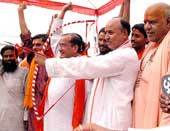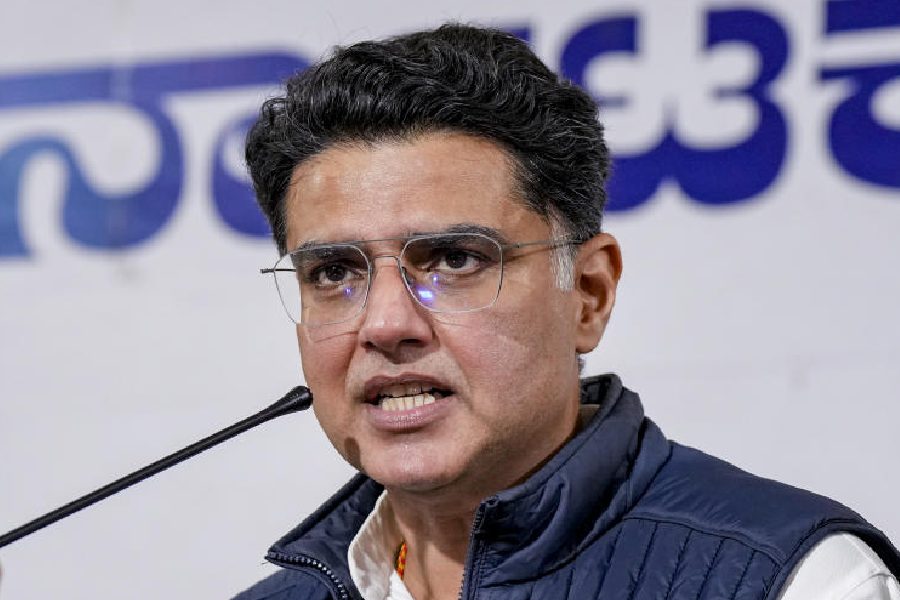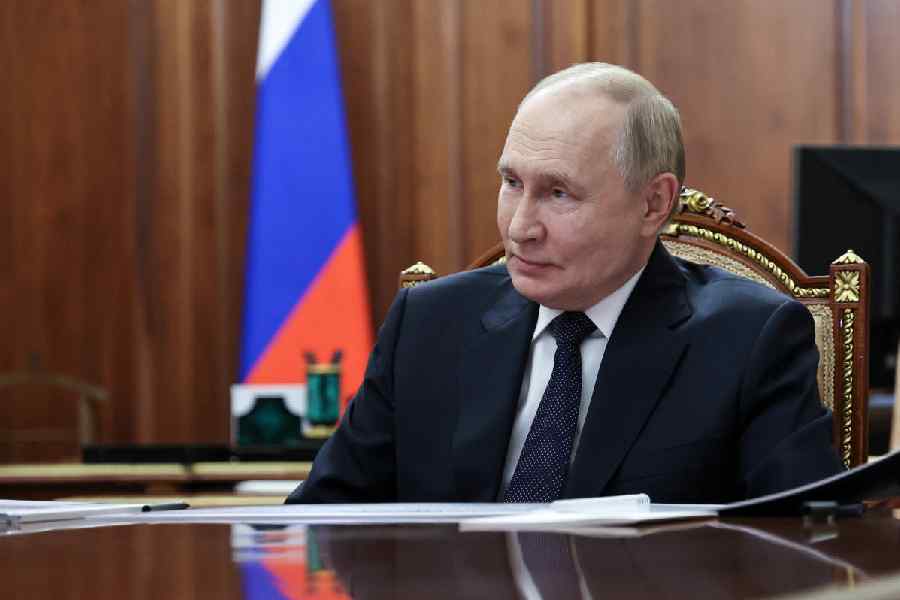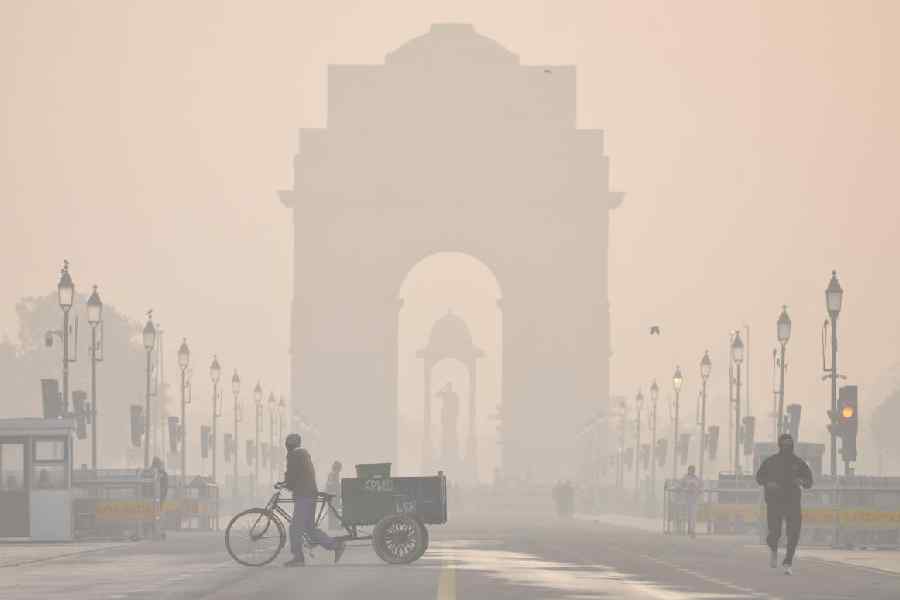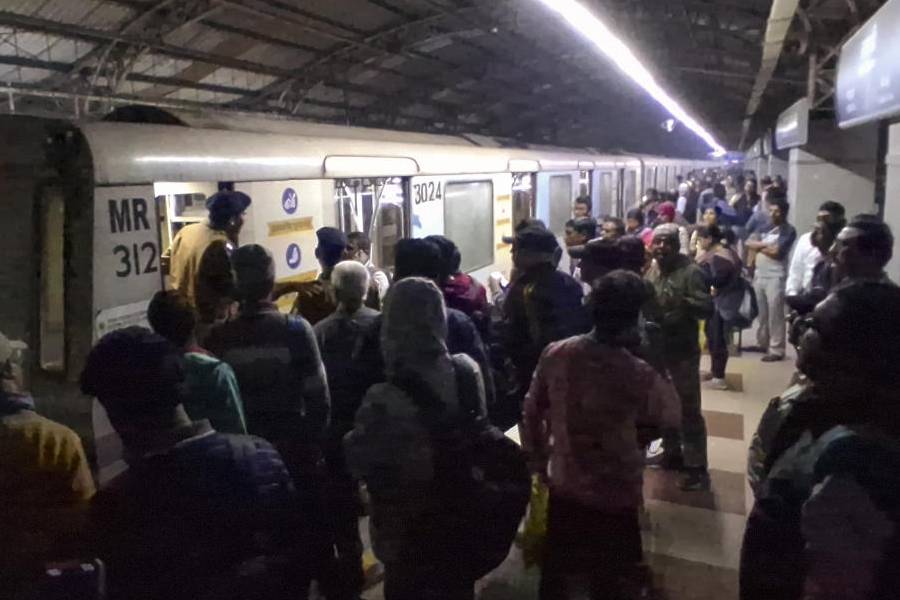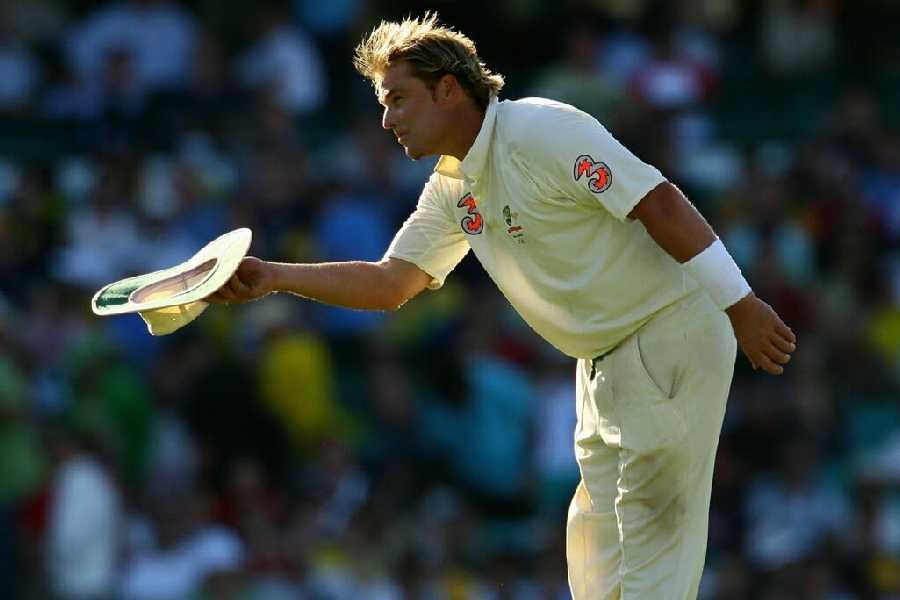|
|
When Manmohan Singh struck the first significant blow at the licence-permit-quota raj in his 1991 budget, it created an upheaval in India’s political classes. The average Congressman was, quite predictably, wary of the elaborate system of political patronage being undermined. But even in the opposition benches the first moves towards unshackling the Indian economy created a measure of confusion. With its record of fighting over-regulation and high taxation, the Bharatiya Janata Party was in broad sympathy with the P.V. Narasimha Rao government’s reforms. Yet, political positioning ruled out any enthusiastic endorsement. The BJP was torn between instinct and realpolitik.
In 1992, at a meeting to arrive at a coherent BJP response to the reforms, a senior leader who is now a pillar of the Vajpayee government conceded the confusion in the ranks. Big industry, he argued, was broadly sympathetic to the reforms because it offered greater manoeuvrability and less bureaucratic interference. The smaller players, however, were apprehensive of the threats from global players and wanted internal deregulation to take precedence over globalization. Since it was the smaller players who traditionally supported the party — the big guns of FICCI and Assocham were firmly in the Congress camp — the BJP couldn’t be unmindful of its constituency compulsions. A possible way out, he suggested, lay in deftly skirting the entire issue. “We will never fight an election on economic issues,” he said.
To date, the BJP hasn’t, but it could well be a very different ball game in 2004. Using the language of an earlier generation, the prime minister has said that “development” will be the main plank of the ruling National Democratic Alliance and the BJP in the general election. Invoking a more contemporary imagery, the deputy prime minister, L.K. Advani, has quipped, “If it’s good news, it’s India 2003.” In various functions, Advani has been harping on the BJP’s newest vision thing — to place India in the ranks of the developed countries by 2020. To drive home the point, an over-zealous party spokesman went to the extent of saying last month that Diwali under BJP rule is happier and more fulfilling than under a Congress dispensation.
Despite insistence from the Vishwa Hindu Parishad and a section of the Rashtriya Swayamsevak Sangh to emphasize the Hindu agenda, the BJP appears to have chosen performance and good governance — primarily economic issues — as its campaign theme for 2004. It is not that Hindutva, the theme that Advani in 1994 described as the BJP’s “ideological mascot”, has been entirely forsaken. National security, terrorism and the entire gamut of India-Pakistan relations will provide emotional sustenance to the party’s traditional supporters. It’s just that explicit Hindutva will have been strategically rebooted.
If the 2004 general election plays out the way Vajpayee and Advani envisage, it will mark an important stage in the evolution of Hindu nationalism. For a start, the slow transition from a Hindu upsurge — which is what defined the BJP in the heady days of the Ayodhya movement — to a more conventional political party will have moved to a higher plane. From being the wild bunch of the right, a view that, tragically, still prevails in the liberal intelligentsia, the BJP is likely to be perceived as a more conventional party, akin to say, the Likud in Israel or the Reaganite Republicans in the United States of America with a strategic relationship with the Christian Coalition.
Secondly, it is highly unlikely that the transition will be entirely trouble-free. An influential section of the sangh is dissatisfied with the Vajpayee government for its failure to push the Hindu agenda further. The inability to make any headway in the Ayodhya dispute is, of course, held up as the government’s biggest shortcoming. To this is added the prime minister’s inconsistency in dealing with Pakistan and Advani’s apparent acquiescence in the project. So intense is the frustration within the ranks of the fiercely committed that there is open talk of floating a separate Hindu party that will press for declaring India a constitutional Hindu rashtra.
Like the ultra-left in the Communist parties who were forever convinced that capitalism was in its final death throes, the radicals in the sangh believe that Hindu society is prepared for a revolutionary upsurge and that the BJP is holding back the people. Therefore, unsettling the BJP’s revisionism would be a first step in triggering the raw emotions that would, in one grand sweep, lead to the liberation of Hindu shrines in Ayodhya, Kashi and Mathura and, simultaneously, herald the decimation of Islamist terrorism.
It’s a grand theory with little bearing on ground realities. Yet, to succeed in its endeavour to make the BJP the natural party of governance and permanently upstage the Congress as the country’s premier political formation, Atal Bihari Vajpayee and Advani will have to preserve unity in the ranks. It won’t do to try and throttle firebrand cult figures like the VHP’s Praveen Togadia. If its claim to re-election on the strength of its actual performance is to enjoy an added emotional thrust, the government will either have to show progress on Ayodhya or fall back on a bellicose anti-Pakistan rhetoric that may yield diminishing returns.
Ayodhya as a grievance has outlived its electoral potential, but there are dividends to be accrued in Ayodhya as a Hindu victory. Before it is able to reap the rewards for the projected 7.5 per cent GDP growth, the end of shortages and pride in India’s advent as an economic power, the Vajpayee government has to attend to the Hindu disquiet that brought it to power in the first place. Failure to do so will invite taunts about swearing by Ram and then expediently dumping him.
Finally, the transformation of the BJP into a nationalist party embracing modernity also necessitates taking economics far more seriously. For the past five years, the Vajpayee government has been pursuing a liberal agenda that has allowed entrepreneurship to flower. It has made life much easier for the consumer and partially nullified the unreal fear of globalization that existed in the popular imagination. It has created exciting and global opportunities for the young without, simultaneously, nurturing the crony capitalism that has been the bane of erstwhile socialist countries.
Paradoxically, this achievement was possible because the BJP assumed the mantle of governance without any baggage of economics — remember Jagdish Bhagwati’s memorable claim to being a Bharatnatyam dancer if those guys could be called economists. Its political ideology was defined as Hindutva or cultural nationalism. But there was no direct linkage either between Hindutva and governance or between Hindutva and economic choice. The economic reductionism — an offshoot of Marxist influence — that underpinned Congress policy was totally absent in the BJP.
This enabled the Vajpayee government to adopt policies that were grounded in pragmatism and focussed on the party’s middle-class (used in its widest sense) support base. It is these twin imperatives that explain its remarkable success on certain fronts and tardy progress on others. Now, the BJP has to build on this by attaching primacy to an economic vision, skirting the vexed area of economic prescriptions. It has to be clear about goals and open-minded on policy.
The complex transition from a protest movement to a party involved in governance is never easy. The BJP has changed a great deal since Vajpayee’s 13-day rule in 1996 but it has some way to go before evolving into a broad Hindu alternative to the Congress system. Its approach to next year’s re-election campaign will determine whether it is going to be one step forward or two steps backward.

